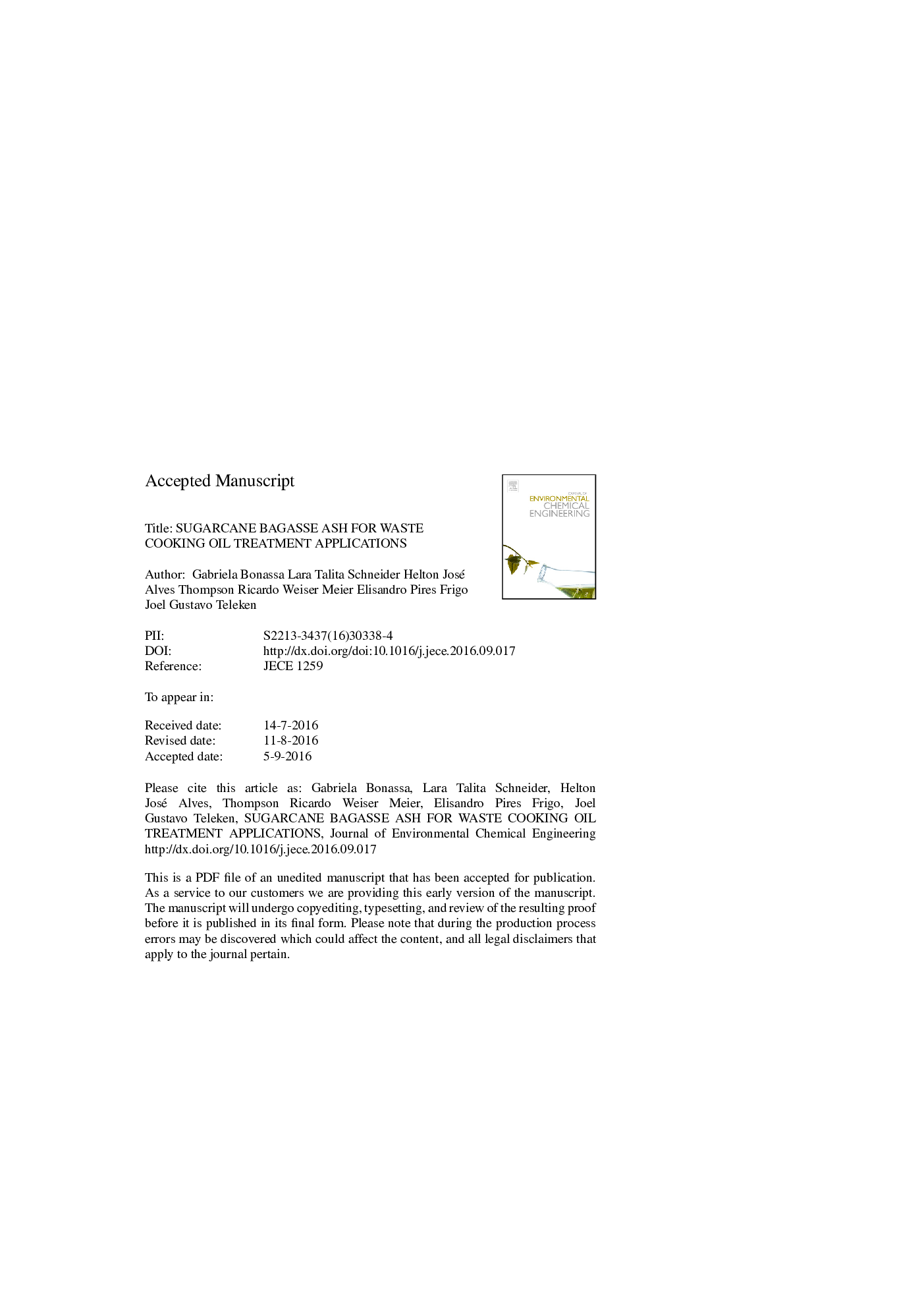| Article ID | Journal | Published Year | Pages | File Type |
|---|---|---|---|---|
| 4908583 | Journal of Environmental Chemical Engineering | 2016 | 32 Pages |
Abstract
The adsorption potential of sugarcane bagasse ash (SBA) and activated carbon (AC) for free fatty acids in waste cooking oil has been investigated by batch technique, with different operating conditions, like temperature, adsorbent mass and agitation. AC and SBA were characterized by nitrogen physisorption, scanning electron microscope, energy dispersive spectroscopy and X-ray diffraction, to identify porosity characteristics, elementary composition and functional groups. The maximum result obtained for activated carbon, commercial adsorbent, at acidity reduction was 63%, using 22,4 °C, 169,64 rpm and 3,39 g of adsorbent mass. Already using SBA, the higher reduction was 68%, at the same conditions, however in shorter times. The above reveals ash's capacity in oil treatment. Since it is a by-product of burnt bagasse, with little added value and with low costs, its employment in these processes becomes an asset.
Keywords
BJHNaOHSBETIUPACRAVSBAEDSCCRDFFABrunauer-Emmett-TellerFe2O3RPMInternational Union of Pure and Applied ChemistryFree fatty acidsAcidityBarrett-Joyner-Halendaanalysis of varianceANOVAAdsorptionPore volumeFly ashSugarcane bagasse ashFrying oilSiO2Silicon dioxideBETenergy dispersive spectroscopyPore diameterSEMSpecific areaScanning electron microscopyX-ray diffractionXRDrotation per minuteActivated carbon
Related Topics
Physical Sciences and Engineering
Chemical Engineering
Chemical Engineering (General)
Authors
Gabriela Bonassa, Lara Talita Schneider, Helton José Alves, Thompson Ricardo Weiser Meier, Elisandro Pires Frigo, Joel Gustavo Teleken,
